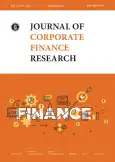Approaches to Building Default Probability Models for Financial Instruments of Project Financing at Long Time Horizons
- 作者: Vasilieva A.1
-
隶属关系:
- Analytical Credit Rating Agency (ACRA)
- 期: 卷 15, 编号 4 (2021)
- 页面: 66-87
- 栏目: New Research
- URL: https://journal-vniispk.ru/2073-0438/article/view/303433
- DOI: https://doi.org/10.17323/j.jcfr.2073-0438.15.4.2021.66-87
- ID: 303433
如何引用文章
全文:
详细
Project financing is one of the priority tools for stimulating the country's economic growth around the world, which allows the implementation of large-scale and capital-intensive projects, providing favorable credit conditions with insufficient creditworthiness of the project beneficiaries [1].
As a rule, project financing instruments are long-term (10-30 years, depending on the type of transaction), so this asset class is interesting for the implementation of the task of building long-term models for assessing credit risk associated with the introduction in 2018 of the new international financial reporting standard IFRS 9 "Financial Instruments".
The new standard requires financial institutions to calculate their expected credit loss (ECL) at the time of granting loans and other banking products exposed to credit risk [2], taking into account different time horizons, which significantly changes the traditional approaches to assessing credit risk by commercial banks [3], [4].
As part of this work, a model was built to assess the long-term probability of default for the portfolio of assets of a Russian commercial bank belonging to the project finance segment in accordance with the requirements of the International Financial Reporting standard IFRS 9 "Financial Instruments". At present, the topic of this work is extremely relevant and may be of interest both for commercial banks that are faced with the problem of improving credit risk assessment models
作者简介
A. Vasilieva
Analytical Credit Rating Agency (ACRA)
编辑信件的主要联系方式.
Email: alfiavaf@mail.ru
Associate Director of the Project and Structured Finance Ratings Group
Moscow参考
- Prokofiev S.E., Murar V.I., Rashkeeva I.V., Elesina M.V. Project finance: The nature and significance. Internet-zhurnal Naukovedenie. 2014;(6):2. (In Russ.). http://dx.doi.org/10.15862/02EVN614
- Cohen B.H., Edwards G.A. Jr. The new era of expected credit loss provisioning. BIS Quarterly Review. 2017;(March). URL: https://www.bis.org/publ/qtrpdf/r_qt1703f.pdf
- Vasilyeva A.F., Zhevaga A.A., Morgunov A.V. Methods of credit risk management for corporate clients under variability of the requirements of financial reporting standards. Upravlenie finansovymi riskami = Financial Risk Management Journal. 2017;(4):258–268. (In Russ.).
- Bank of Russia Regulation of 06.08.2015 No. 483-P. On the procedure for calculating the amount of credit risk based on internal ratings. URL: http://www.consultant.ru/document/cons_doc_LAW_186639/ (In Russ.).
- Sorge M. The nature of credit risk in project finance. BIS Quarterly Review. 2011;(December). URL: https://www.bis.org/publ/qtrpdf/r_qt0412h.pdf
- Hainz C., Kleimeier S. Project finance as a risk-management tool in international syndicated lending. SSRN Electronic Journal. 2006. http://dx.doi.org/10.2139/ssrn.567112
- Wilson R. Risk measurement of public projects. In: Lind R.C. Discounting for Time and Risk in Energy Policy. Washington, DC: Resources for the Future, Inc.; 1982:205–249.
- Vasilyeva A.F., Jorge Trujillo Cesar Augusto et al. Infrastructure investment and PPP: How will credit ratings help attract new players? Research by the Analytical Credit Rating Agency. Moscow: ACRA; 2020. 33 p. URL: https://www.acra-ratings.ru/upload/iblock/a30/osnriwpqczjm43txih1646uhgjddg38g.pdf (In Russ.).
- Vasilyeva A., Frolova E. Methods of calculation of expected credit losses under requirements of IFRS 9. Korporativnye finansy = Journal of Corporate Finance Research. 2019;13(4):74–86. https://doi.org/10.17323/j.jcfr.2073-0438.13.4.2019.74-86
- Guidance on credit risk and accounting for expected credit losses. Basel: Bank for International Settlements; 2015. 36 p. URL: https://www.bis.org/bcbs/publ/d350.pdf
- Vasilieva A., Frolova E. Development of the ‘inner assessment model’ of long-term default probability for corporate borrowers in the trade segment of the economy in accordance with IFRS 9. Korporativnye finansy = Journal of Corporate Finance Research. 2020;14(1):91–114. https://doi.org/10.17323/j.jcfr.2073-0438.14.1.2020.91-114
- International Financial Reporting Standard (IFRS) 9: Financial instruments. 2018. URL: http://www.consultant.ru/document/cons_doc_LAW_201982/ (In Russ.).
- Guidelines on the application of the definition of default under Article 178 of Regulation (EU) No 575/2013. EBA/GL/2016/07. URL: https://www.eba.europa.eu/sites/default/documents/files/documents/10180/1721448/052c260f-da9a-4c86-8f0a-09a1d8ae56e7/Guidelines%20on%20default%20definition%20%28EBA-GL-2016-07%29_EN.pdf?retry=1
- Marshall J. An introduction to reliability and life distributions. Coventry: The University of Warwick; 2018. URL: https://studylib.net/doc/13322936/an-introduction-to-reliability-and-life-distributions-obj
- Kuznetsova Yu.I., Zhuravlev I.B. Application of the Bayesian estimate of the probability of a rare event to determining the probability of default of a counterparty. Upravlenie finansovymi riskami = Financial Risk Management Journal. 2013;(2):94–102. (In Russ.).
补充文件










